Iceland is a very popular tourist destination, but it takes a fair amount of planning to organize an Iceland vacation if you are visiting for the first time. Unlike visiting Paris or Rome where everyone is familiar with the main attractions, Iceland is still a bit of an unknown. To get you started, I’ve shared my best Iceland travel tips based on my multiple visits to Iceland and helping over two dozen families plan their trips.
I’ve visited Iceland in summer, fall, and winter, giving me extensive experience to share what I have learned with others. In addition, the friends I have made in Iceland help me stay up-to-date on the latest new when it comes to travel to Iceland.
Once you read these tips, be sure to also check out my posts on what to pack, how to put together an Iceland budget, my 5-day Iceland itinerary, the most unique things to do, and the best ages to take kids to Iceland.
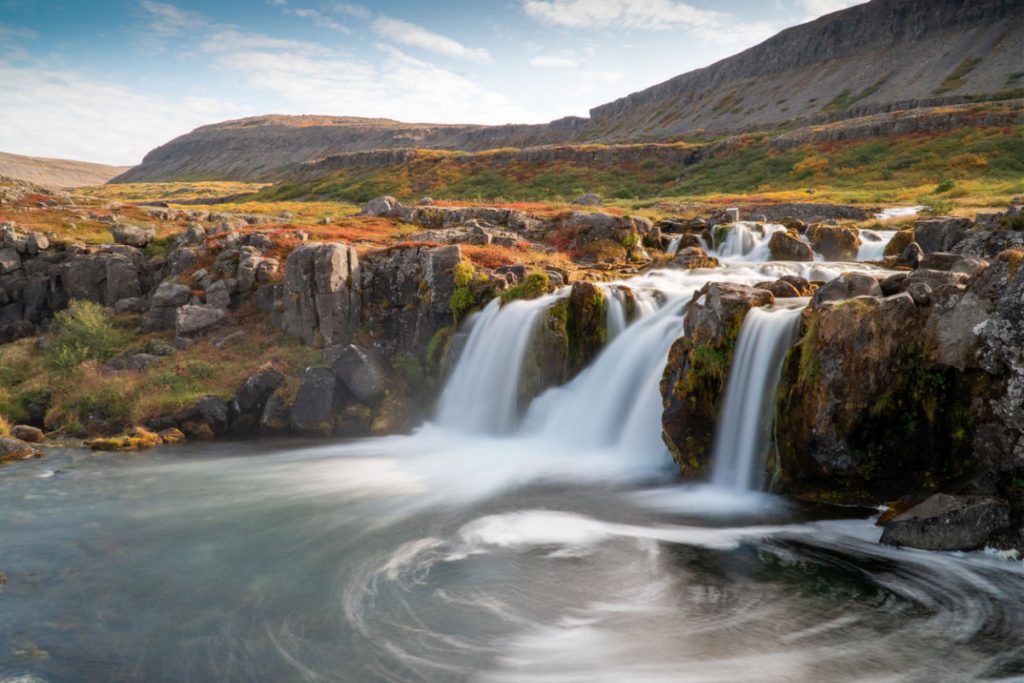
TOP Iceland Travel Tips
Note: This post may contain affiliate links. If you click a link and make a purchase, I may receive a small commission. All opinions are my own.
If you need help planning a custom trip to Iceland, check out my partner Hidden Iceland. You can also receive a 10 percent discount on scheduled group tours when booking with Hidden Iceland using promo code WE3TRAVEL.
1. Plan early!!
Seriously. Hotels book up at least six months in advance in popular areas, especially in the summer months as tour operators will block off much of the available inventory. This has gotten much better as new hotels have been built and Iceland has expanded its tourism infrastructure but it is still a popular destination so it is a good idea to book early.
Unless you are staying in Reykjavik for your entire trip, finding the availability and dates that you want can be like piecing together a jigsaw puzzle so it really helps to plan early.
2. Budget wisely.
Don’t let cheap airfares fool you, Iceland is an expensive country. Unless you are using a camper van or vacation rentals, a week-long trip can run anywhere from $4,000-20,000+ depending on the number of people, where you stay, and how many activities you choose to do. Check out my post on how much a trip to Iceland costs.
Of course, there are many tips that you can use to save money, like staying in an Airbnb or vrbo and cooking your own food, camping, or sticking to free activities like hiking in Thingvellir National Park.
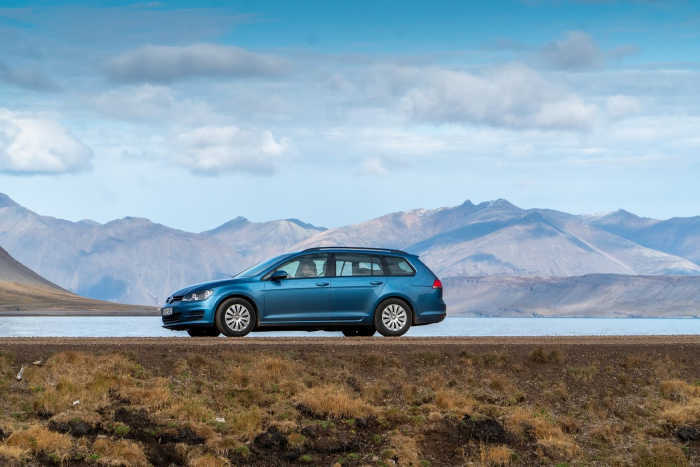
3. Plan on a lot of driving.
You will need a good 10 to 14 days to take a road trip along the entire Ring Road around the country, but even if you don’t have that much time, you will still be doing plenty of driving. If you are visiting Iceland in the winter, the best way is to base yourself in Reykjavik and let someone else do the driving for you, as the roads can shut down entirely for storms.
Iceland may not look big on the map but with narrow, winding highways it takes a long time to get from place to place. So even if you are just visiting one region, like the Golden Circle and the South Coast or the Snaefellsnes Peninsula, there is still a lot of driving involved. If you want to get to more remote places like the West Fjords, plan to spend at least a week in Iceland.
4. Expect to move Hotels.
Unless you want extremely long days driving back and forth to different attractions and activities, you will need to move hotels or accommodations quite a bit. Plan on spending one-to-two nights in about three-to-four locations on an average trip.
I know this isn’t ideal as you won’t feel very settled, but trust me when I say that moving hotels is easier than adding all the extra hours in the car.
5. Be Smart with your Car Rental.
It is tempting to grab a cheap rental car deal when you see it, but pay attention to the details! First of all, if you want to drive on any of the interior F-roads, you will need a car that is rated for these roads. You can easily drive most of the highways with a standard sedan, but when you get to the F-roads or the gravel roads in the West Fjords and other places with poor road conditions, you will probably want an SUV. And if you are visiting in the winter and plan on driving, a 4WD car is essential.
On the Snaefellsnes peninsula, I saw a car stuck in a cratered parking lot just hanging on a bump surrounded by potholes. To avoid this and make for a smoother ride, an SUV or something with a higher clearance is just a lot easier.
And, I know everyone asks, do I really need to buy full car rental insurance in Iceland? The answer is yes! You will need to invest in the extra insurance that covers gravel and ash. This can really add to the price of your car rental so budget accordingly, but you don’t want to pay for all those dings and dents make from flying rocks or gravel.
6. Choose Activities wisely.
There are so many activities to do and so much of Iceland’s beautiful outdoors, like natural hot springs, waterfalls, national parks, and lava fields are completely free to enjoy. If you plan on taking tours, they can get expensive and costs can add up fast, so choose wisely. Instead of staying in Reykjavik and only taking tours, rent a car and explore on your own.
However, there are times when you absolutely have to take a tour. For example, you will need to take a tour if you want to walk on the glacier.
At the Jokulsarlon glacier lagoon you can see plenty of icebergs from the beach without taking a boat tour. However, it can be fun to see more icebergs and get closer to the glacier face on a Zodiac tour.
Of course, a guided tour gives you the benefit of local knowledge and you can learn so much more about the landscape, geology, folklore, and Icelandic culture.
We have partnered with Hidden Iceland on tours and found the team outstanding. Not only are they all professionals (there are volcanologists, geologists, and others on the team), but the company also focuses on sustainable business practices and education. You can save 10% off scheduled group tours with Hidden Iceland with promo code WE3TRAVEL and if you want a custom trip or private tour, just be sure to tell them I sent you when you contact them.
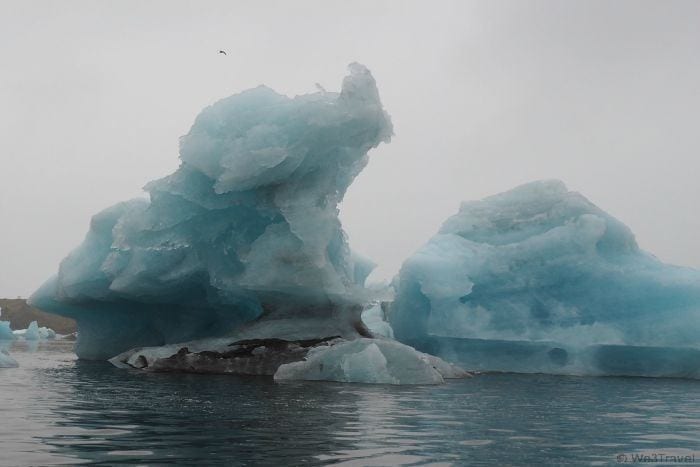
7. Craft an itinerary.
Iceland attracts those that just want to roam freely and explore. And that is awesome. But unless you are camping (or even if you are as you can’t free camp everywhere), this is the kind of country where you really need to plan ahead a bit and know what you want to do.
Everything is so spread out that you’ll need to organize your itinerary to minimize driving time. It takes a while to get your head around the various places so I highly recommend following a suggested itinerary or using a mapping app to save the locations and map out distances so that you can get a sense of how much time you will need and where you can stay.
Just make sure when you are crafting your itinerary that you also leave yourself enough time to hop out and explore a waterfall, take pictures, and enjoy nature along the way.
8. Book your activities in advance.
I know it is tempting to just go with the flow, but if you are going during a busy season, activities sell out. Especially at places like the Blue Lagoon. Even ferries to the Westmann Islands can book up weeks in advance.
These days there are generally enough tour companies around that you can find someone available, but it really helps to book in advance.
9. Don’t exchange much cash.
You can use a credit card for nearly everything. The only things we paid cash for were tips for tour guides. I have had a lot of fun shopping at the airport to use up my leftover króna but why waste money if you don’t need to? Just don’t take out much cash to start with.
10. Know your credit card pin.
If you have a debit card or credit card with a chip and PIN, make sure you know your PIN, you will need it to get gas at unmanned gas stations. As is common in Europe, you can easily pay with a chip and pin card at handheld terminals at restaurants and in shops. Since many US-based cards don’t automatically issue a PIN, you may need to request it from the bank or credit card issuer.
Making purchases won’t be hard without the pin, as you will just need to sign a receipt like you would in the US. The only time this is really a problem is at the unmanned gas station (see more on that below.)
11. Get your VAT back.
If you purchase souvenirs greater than 6,000 ISK, you should get a form to get a refund on your VAT (value-added tax). Even if you don’t, it is easy to take care of this at the airport. This is common enough in European countries but if you haven’t done it before, this is what you do.
When you get to the airport, BEFORE you check your luggage, look for the signs for the VAT refund office or Arion bank, fill out the form and drop it off. They may need to see the goods before approving it but chances are, they will just ask if you want a credit or a check — it is simple and saves you money.
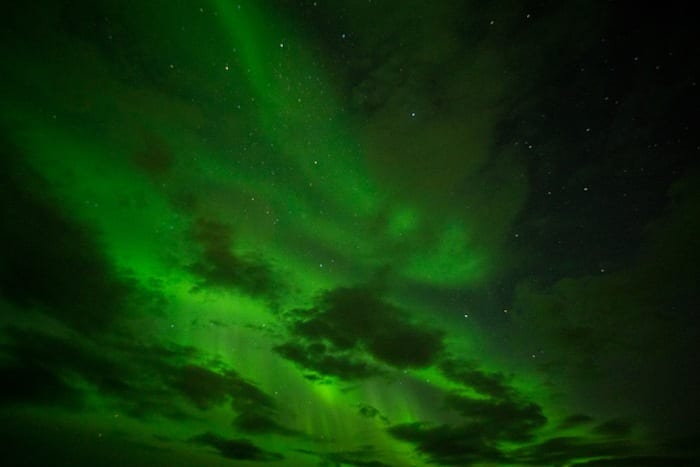
12. Tipping is not required.
Tipping is not required but appreciated. The service and VAT are included in the price, but I know when I’ve tipped, especially our tour guides, it was always welcomed with a smile.
13. Buy a prepaid gas card.
If you don’t have a chip and PIN card, stop for gas near Reykjavik, Selfoss, or another large town and buy a gas prepaid card because many gas stations around the country are unmanned.
If you don’t have a prepaid card or chip and PIN credit card you are out of luck. N1 seems to be the most common brand so I would suggest an N1 prepaid card.
14. Plan ahead if you are Out Late.
Most of the gas stations with convenience stores and facilities close at 9 or 10 pm so fuel up early if you are making a long drive. It is very difficult to find a public restroom after the gas stations close so be prepared! The landscape is also wide open so it is hard to find a bush to go behind. 🙂
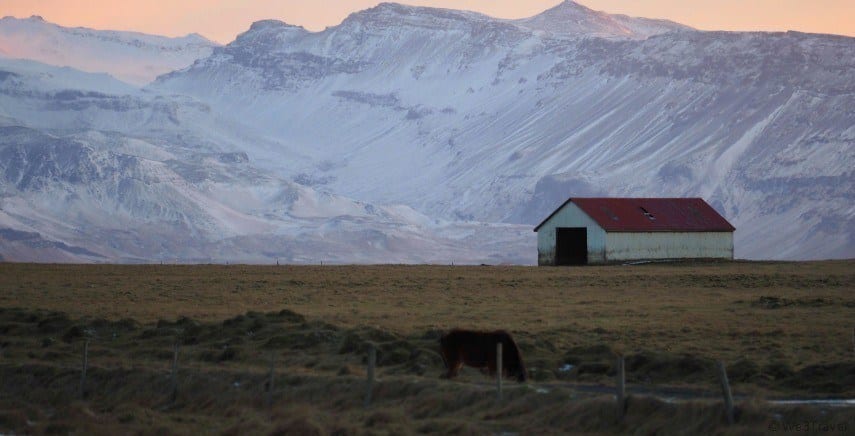
15. Obey the law.
Iceland is the safest country in the world. You won’t see many police cars and you don’t really need to worry too much about crime, but there are traffic cameras so watch out!
We got a speeding ticket and we couldn’t have been going very much over the limit at the time. We found out from an email from the car rental agency who also tacked on their own penalty fee — not cool.
16. Be prepared.
Stop at one of the grocery stores (like Bonus) and stock up on protein bars and snacks. When you are driving through the country you may not see a place to eat for an hour or more. You should also pack a refillable water bottle as all the tap water is safe to drink and there is no need to no need to purchase bottled water. You may, however, notice a slight sulfur smell in some areas.
Also, bring waterproof pants and a raincoat (we found great deals at Columbia) for visiting waterfalls or you will get soaked! And don’t forget flip-flops if you are going to the Blue Lagoon! (See my complete list of what to pack for Iceland!)
17. Check directions.
Don’t rely entirely on Google Maps. Chances are it will send you on the most direct route, which may include roads that are closed due to snow (even in the summer.) If you are meeting a tour operator, ask them for the best route.
We had a situation where I had planned on our drive to meet up with a tour taking about an hour based on Google Maps. Luckily the night before I look at the confirmation directions more carefully and I realized I needed to drive all the way around because there was a glacier in the middle. That really changed our outing!
18. Drive Safely.
Before you head out on your drive, check for road closures and conditions on road.is website. If heading off-road, log your plans on safetravel.is and download the 112 Iceland App. If you do run into trouble, the Icelandic emergency number is 112.
I can’t stress this enough, especially if you are driving in the winter. It isn’t at all uncommon in the winter to see roads shut for days at a time or to have travel restrictions in place because of storms or high winds.
And you could also unexpectedly run across sheep in the road or backpackers walking along the non-existent shoulder so pay attention.
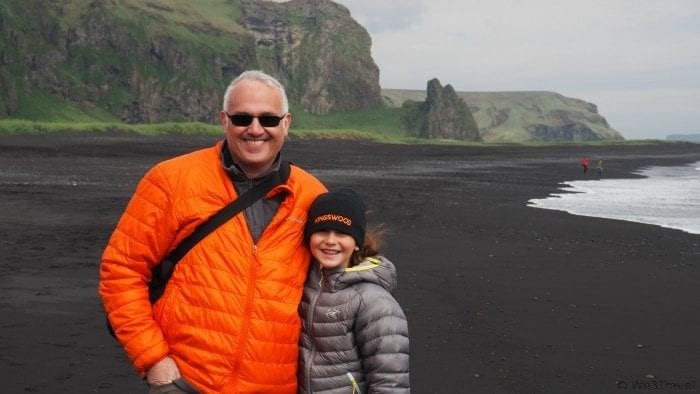
19. Check the holidays.
If you are visiting during June, National Independence Day is June 17th, and many businesses will be closed. In Reykjavik, you can join in on the parades and festivities but be aware that there may be some political demonstrations too.
20. Get ready for light (or dark.)
If you are visiting in the summer season, you won’t see the Northern Lights / Aurora Borealis but you will have the benefit of Midnight Sun so you can take advantage of the long days to fit in a lot of sightseeing and you don’t need to worry about driving narrow winding roads in the dark. Just bring a sleep mask and maybe some melatonin to help your body know it is time for sleep.
Likewise, if you are visiting in the winter (and yes, there are some advantages), you will need to plan around very short days with not many daylight hours, when the sun rises at 10 am and sets at 4 pm. You will want more time relaxing in hot tubs and less time driving long distances and plan on any excursions during the middle of the day.
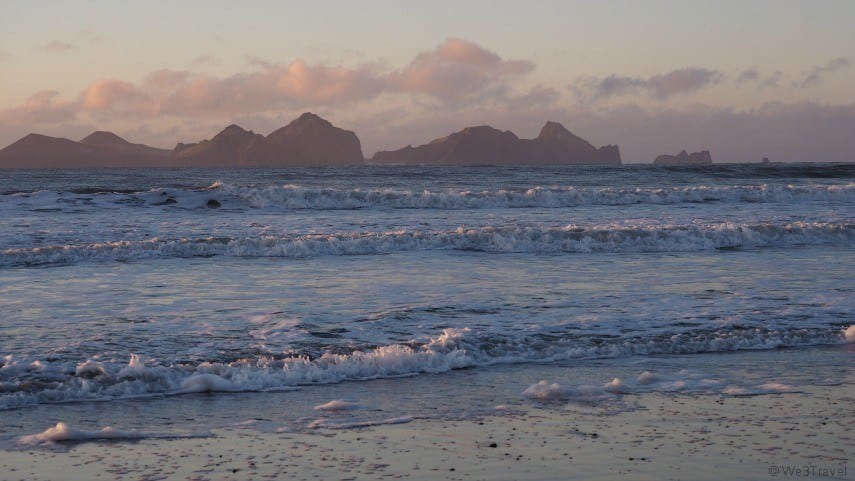
21. Be careful.
When visiting the black sand beaches, stay away from the water’s edge, especially if you turn your back to the water. They tend to get rouge waves and strong undercurrents that can take people unaware and pull them out to sea.
Also, don’t venture too close to the cliff’s edges. There are not many barriers or fences in Iceland. If you see a warning sign, it is there for a very good reason and you need to pay attention.
22. Not for picky eaters.
Icelandic food is predominantly lamb, seafood, and their traditional meat soup (lamb.) But if you have a picky eater in your group you can find mediocre hamburgers in most places and even some pizza.
The food scene has definitely improved in recent years, especially in Reykjavik. And I’ve had some of the best seafood of my life in Iceland. But what you won’t find are American fast-food chains or Starbucks, except maybe Subway, while you are out and about in the countryside.
Don’t despair though, the gas stations sometimes have some great convenience foods available and everyone needs to try at least one Icelandic hot dog!
23. Get your camera ready.
Bring extra batteries for your camera and a car charger for your phone, and maybe even an extra SD card because you will take a lot of pictures! Some type of waterproof case or bag would be helpful near the waterfalls.
If you are visiting in the winter, you will need extra batteries because the cold drains them quickly. And, during the winter months if you plan on looking for the Northern Lights, make sure you understand your camera settings so that you can capture the memory.
24. English is welcome.
While it is always nice to learn a few words of the language of the country you are visiting, you don’t need to worry too much about a language barrier. Everyone speaks excellent English. If you can learn a few words, you will certainly impress your friends back home! Just listen to the locals pronounce Eyjafjallajökull and you will see why.
But once you get a hang of how the words are formed, the names of places start to make more sense. For example, foss means waterfall, jökull means glacier, vik means bay, dalur means valley. It is like decoding a puzzle once you learn the meaning of a few words.
25. Pack smart.
Be prepared for vastly different landscapes and weather conditions. You might need a jacket in the city but not on the glacier or vice versa. Layers are critical in Iceland!
I found it helpful to be prepared for whatever weather we might encounter. Find my packing lists for Iceland in summer and winter. Start with a good base layer and add from there. Our Columbia omni-heat lined jackets were warm but very lightweight and didn’t take up a lot of room in the suitcase. Make sure to invest in warm wool socks and waterproof hiking shoes are an absolute must!
In the winter, you will also need slip-on microspikes or crampons like Yaktrax when visiting waterfalls or other icy spots. Also, make sure to bring along a European power adapter or converter to charge your camera and phone.
More Information for your Iceland Trip
If you are planning a trip to Iceland, be sure to also look at these articles:
- 5 Day Iceland itinerary
- How much does a trip to Iceland cost?
- 4 Days in the West Fjords
- Day trips from Reykjavik
- Reykjanes Peninsula day trip
- Snaefellsnes Penisula day trip
- Is the Blue Lagoon worth it?
- Where to stay in Reykjavik with kids
- Where to eat in Reykjavik
PIN THIS FOR LATER
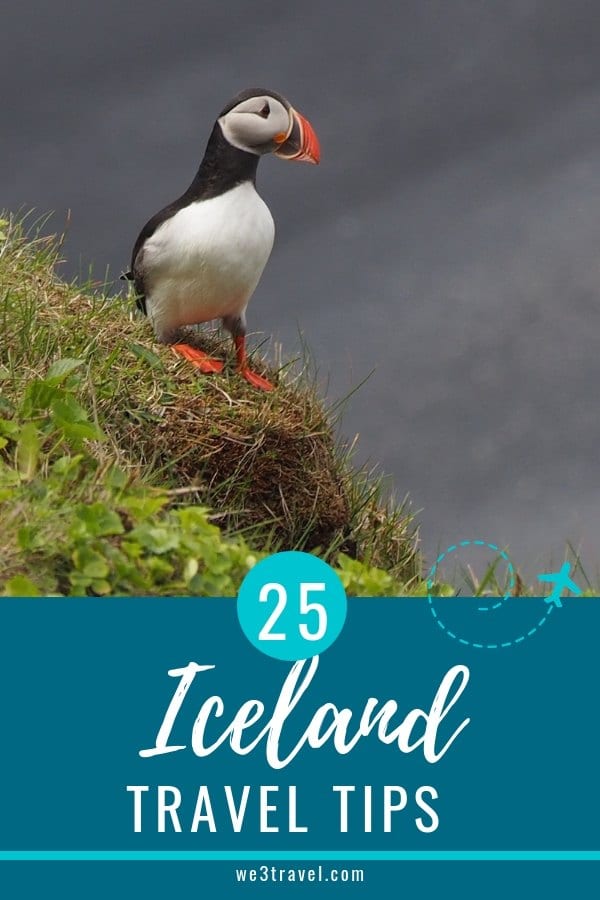

Tamara Gruber is the Founder and Publisher of We3Travel. A former marketing executive and travel advisor, Tamara is an award-winning travel writer and recognized expert in family travel. Tamara is a member of SATW and the Adventure Travel Trade Association, and serves on the Board of the Family Travel Association. She is also the publisher of YourTimetoFly.com and the co-host of the Vacation Mavens travel podcast.


